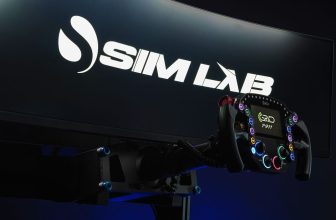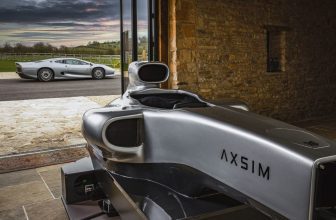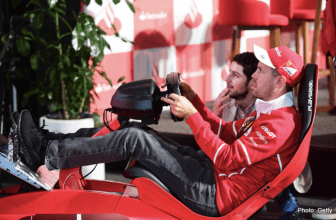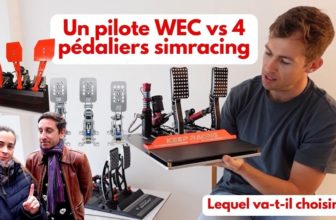
In the world of Sim Racing, where technology and passion meet, an exciting new chapter takes shape. With the arrival of Formula, an innovative project conceived by talented Italian designer Fabio Bilotta. In a bold attempt to push back the boundaries of automotive design, Fabio has created a work of art. It skilfully fuses the principles of product, furniture and transportation design.
An inspiring reference
Inspired by Istanbul’s famous Air Control Tower, the Formula cockpit embodies a harmonious blend of sophistication and dynamism, elevating its status to that of a singular masterpiece. Fabio has drawn on the tower’s iconic structure to create a revolutionary driving simulator. It combines aesthetics and functionality in an unprecedented way.
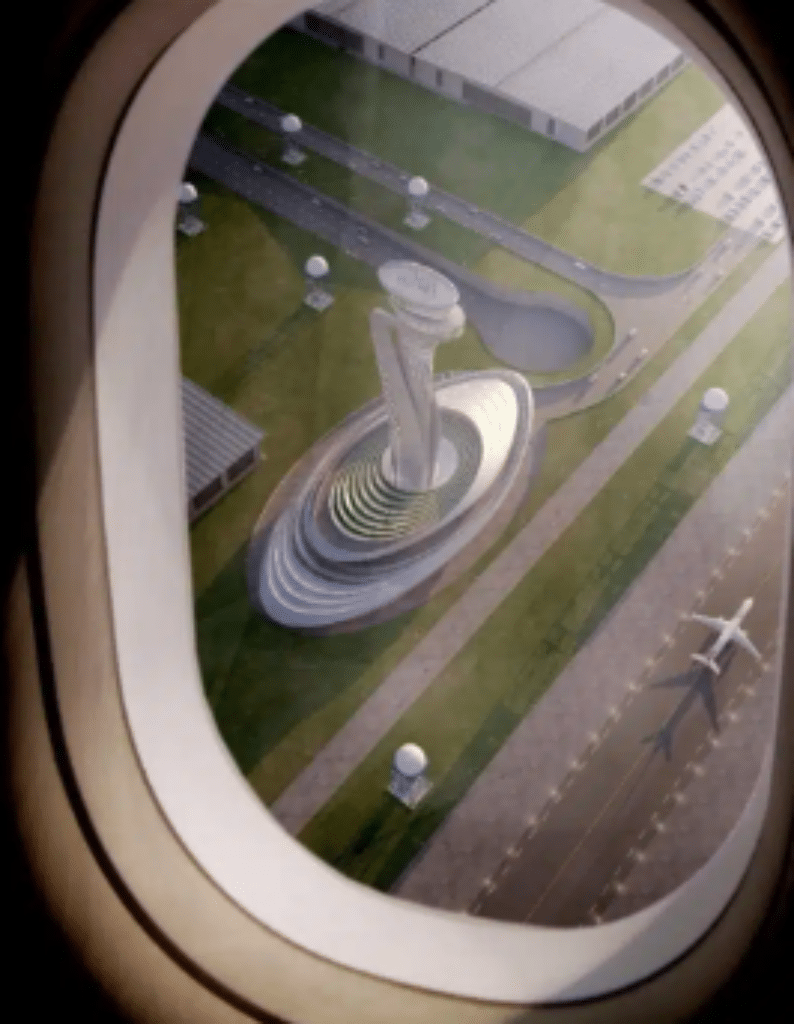
Hello Fabio, how did you approach this project?
Where did you find your inspiration?
It all started with a pen, white paper and Pininfarina’s air traffic control tower as a reference.
Right from the start, the aim was to merge three areas of design that I love: product, furniture and transport. The idea of designing a simulator came quite naturally: it was the perfect incipit for an object where form follows function, with a little function following form and a touch of spice on top.
The ingredients were all there in front of me, showing their potential, seducing me to seize them and create something new.
Elegant design, exemplary formula performance
Designed with uncompromising attention to detail, the Formula is distinguished by its use of top-quality materials. We talk about carbon fiber, reinforced plywood, stainless steel and genuine leather. Each material has been carefully selected for its durability, strength and aesthetics, guaranteeing an immersive and luxurious gaming experience.
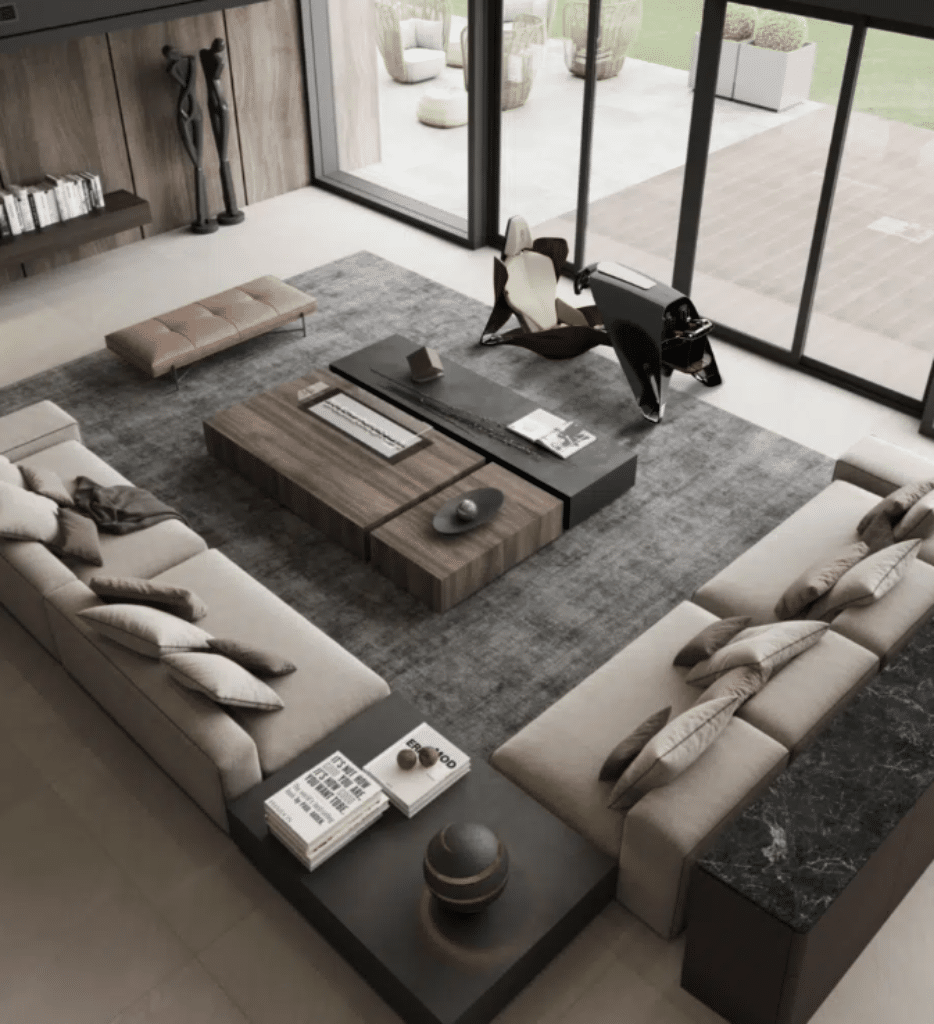
Do you think that in the future, a sim racing cockpit will be better integrated into our homes?
I’m sure it will. I think professional sim racers will continue to prioritize performance and functionality above all else, but I believe there is a large proportion of non-professional customers who have no intention of “sacrificing” an entire room for it.
In this scenario, I see future simulators becoming an integral part of our living rooms and bedrooms in a non-intrusive way, allowing more versatility while preserving a good level of performance.
Precise formula performance, ergonomic comfort
At the heart of the Formula design philosophy is ergonomic excellence. Inspired by the driving position of Formula 1 cars, Fabio has created a simulator. This one offers optimum comfort and precise control. Enough to allow users to fully enjoy their gaming experience.
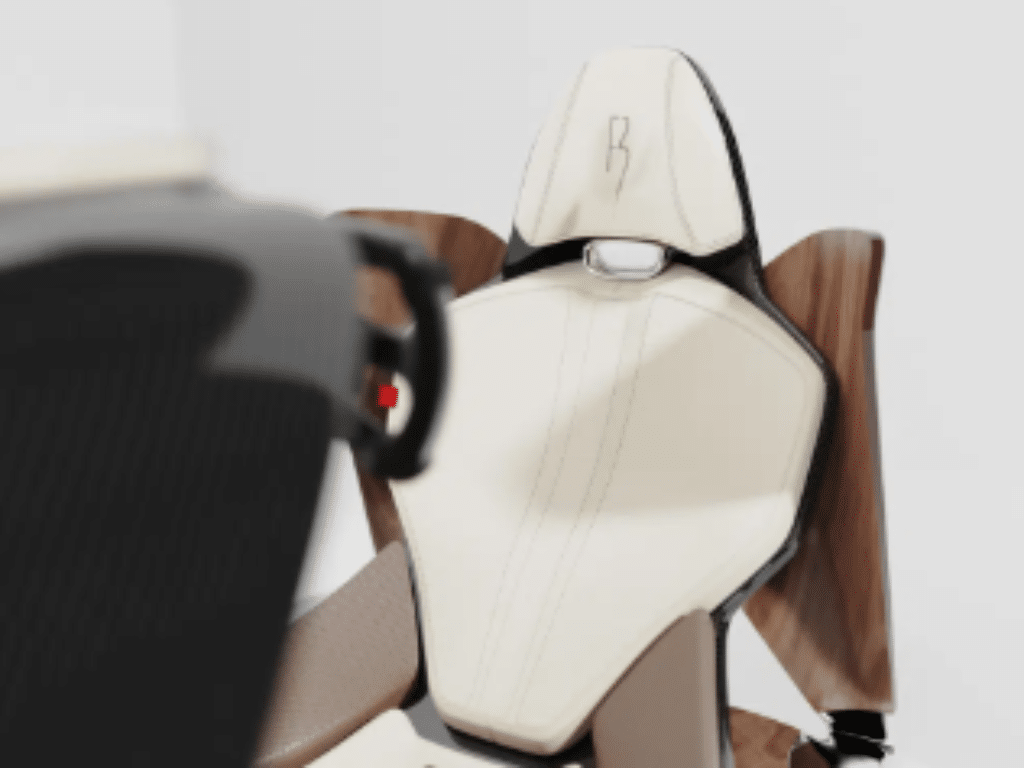
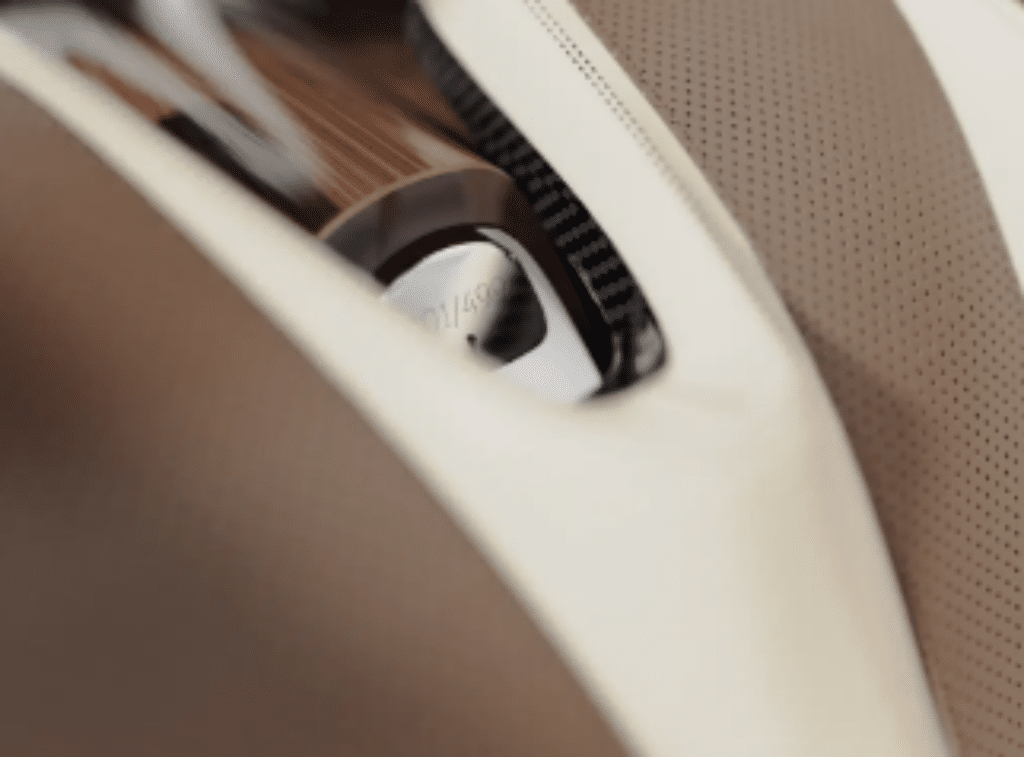
How important do you think design is in Sim Racing?
First of all, I must stress that Formula is aimed at a completely different target. It’s essentially an exercise in style and beauty that doesn’t see money as a limitation at all.
It’s not aimed at the regular sim-racer like most of us, but at a niche of affluent customers who value quality materials and aesthetics. That said, this simulator is indeed practical: it’s lighter than most seats on the market, has an adjustable pedal slide and an adjustable steering wheel housing.
It can be used with a VR headset or a more conventional display/projector arrangement, and the seat covers can be detached and washed. It’s also important to say that I started designing the Formula around the human body, to ensure that ergonomics wouldn’t be sacrificed. The seating position is exactly as it would be in a Formula1car
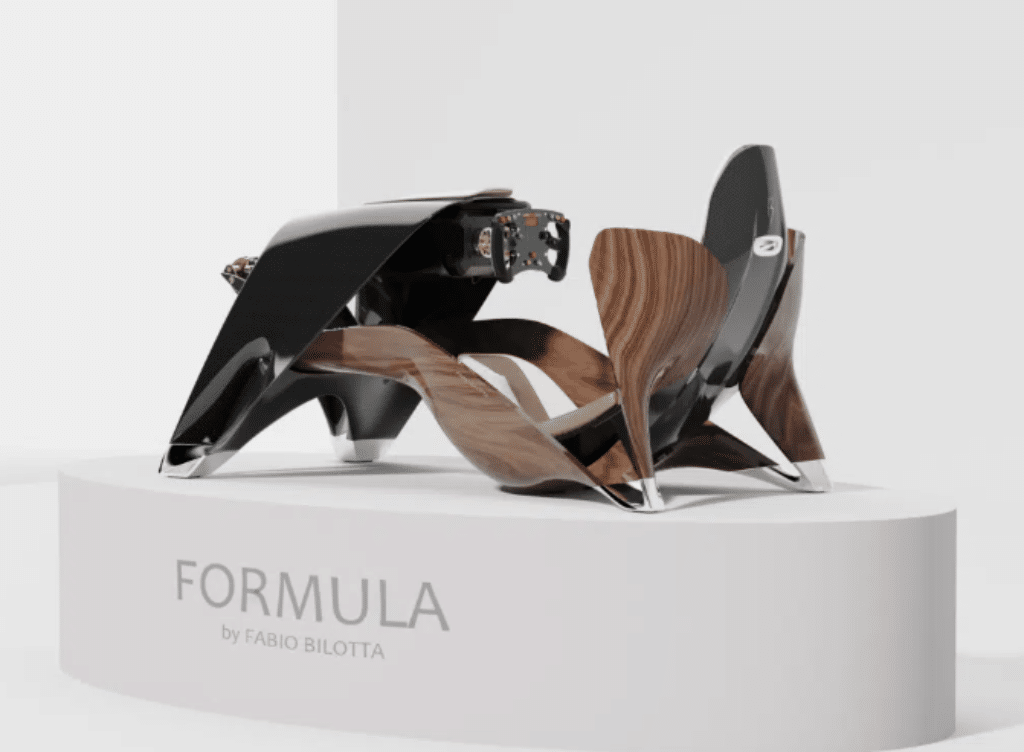
How do you see the sim racing industry in the future?
Today, most simulators are at home and intended for entertainment and competition, but they are in fact incredible tools for educational purposes too.
In the near future, I see simulated driving approaching people who couldn’t care less about cars and motorcycles. I see a simulator in every driving school and I see people experiencing extreme situations with no risk to their safety, learning how to deal with such circumstances in real life.
Focusing on pure sim-racing, this is of course a growth sector, as it allows everyone to satisfy their need for speed in their own home and without spending a ridiculous amount of money. It’ll never be as exciting as real racing, but it’s becoming increasingly realistic and enjoyable.
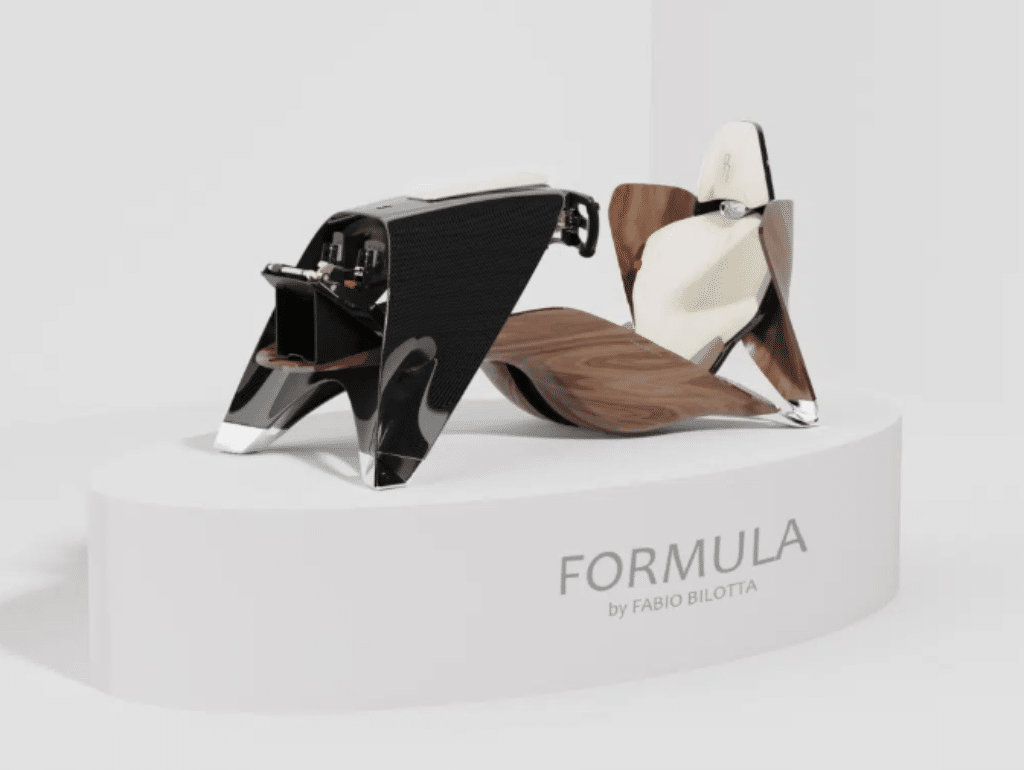
Are there any specific technologies or innovative features built into Formula that you’d like to highlight?
I could mention production processes or materials that have never been used before in this field. I could mention the lightness of this object. But the truth is that Formula is nothing more than a cool chair. There are no electronics, no batteries, no screens.
The Formula’s innovation lies in its overall recipe: the aim is to astonish people and make the user feel special, unique. Formula’s innovation lies in giving birth to a new market.
You could find it on sale in a luxury furniture store, as well as in a fashion boutique or a store specializing in sim racing. Formula’s innovation is aimed at a target that doesn’t yet exist.
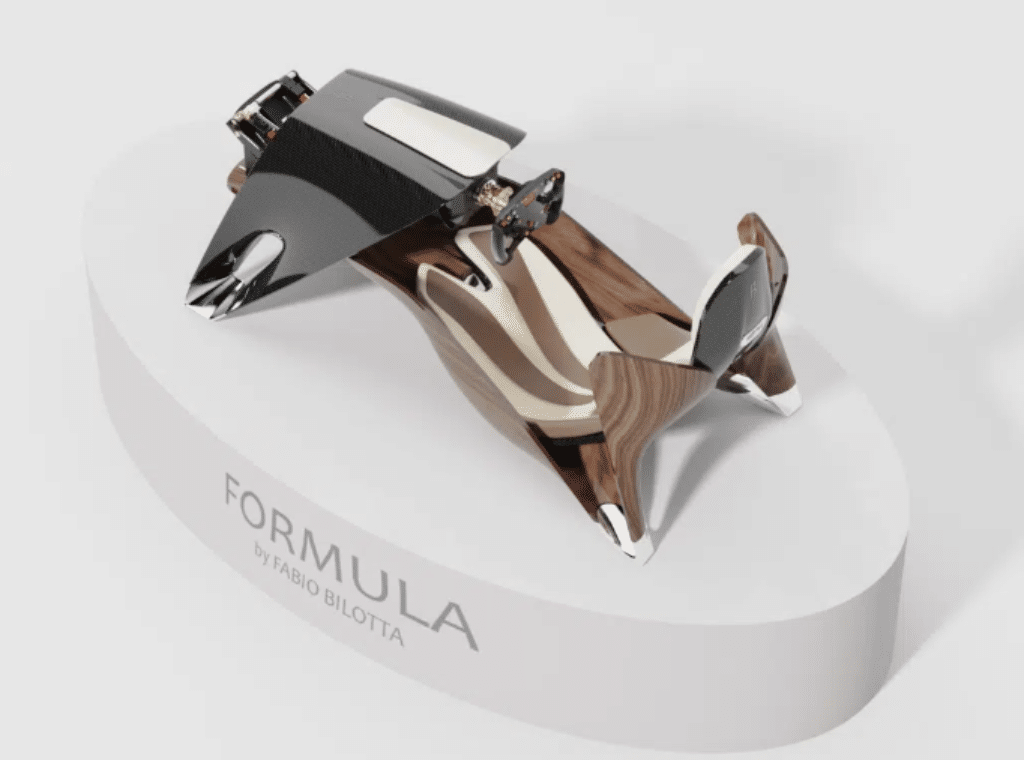
Through Gran Turismo, we’re seeing some extraordinary projects emerge. Would you be tempted one day to offer a style study in a game? What do you think of Polyphony Digital’s approach?
I think their approach is totally correct. Anything that narrows the gap between the real and the virtual deserves a lot of credit. Polyphony Digital triggered an incredible trend: car manufacturers started designing cars for games, which allowed designers and engineers to go completely crazy in terms of form and performance.
A game-related project is something I’d certainly like to undertake, as it offers a chance not to think about limits, sales and rules. Apparently, this is an idyllic scenario for any designer, but having a completely blank canvas can actually reveal a dangerous downside. And that’s why I’d accept the challenge.
You’ve also completed another project: the Ferrari H2 Berlinetta. An equally exciting project with stunning results. Would you like to see it in a video game like Gran Turismo?
That would be great. The H2 Berlinetta takes an equally innovative approach: hydrogen replaces petrol in an (almost) traditional V12 engine to preserve the Prancing Horse’s signature and make it environmentally friendly. I paid great attention to aerodynamics, starting by sculpting the volumes like a single block of marble. There are no wings, no random spoilers, no absurd air intakes, and yet the car can penetrate the air and create downforce quite effectively without compromising elegance or sportiness. When you design a Ferrari, you have to be able to combine sensual lines with an aggressive feel. You have to rely on surfaces and volumes instead of silly additions, colors and graphics. You need to eliminate anything unnecessary while achieving something special and iconic. The more you find this balance, the more the car will look like a Ferrari.
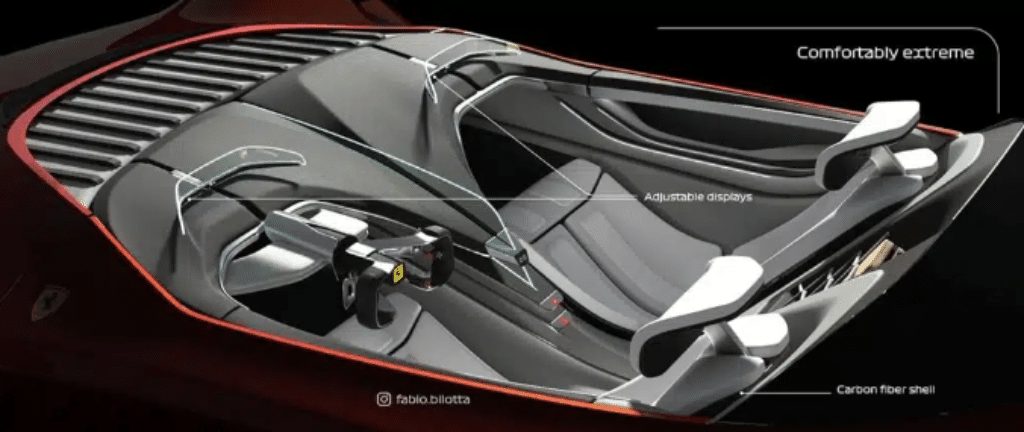
Conclusion
The Formula project is much more than just a driving simulator. It’s a statement of intent, a perfect marriage of art and engineering that promises to redefine Sim Racing standards. With its elegant design and exemplary performance, it embodies the pinnacle of luxury in the world of video games. And, offering an incomparable driving experience for enthusiasts the world over. We would like to express our sincere thanks to Fabio for his generosity and availability throughout this interview. His passion for design and commitment to innovation have been a source of inspiration to us all. We’re grateful for the opportunity to share his journey and vision with our readers. We look forward to seeing the future achievements of this talented designer.
Thank you, Fabio, for everything you bring to the world of design and Sim Racing.



